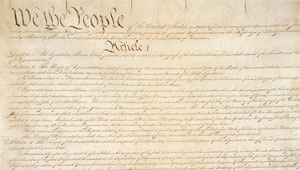Hamptons media, caving to political pressure, are short-changing the public on facts needed so democracy can function. Awareness and discussion of two current issues suffer from an info deficit—the proposed eruv and Wi-Fi radiation in the local library and schools.
 The Southampton Press/27east.com bowed to political and religious powers June 3 by skipping mention of the major news of the June 2 Westhampton Beach board of trustees meeting—the adoption of an agreement with the East End Eruv Assn. allowing permanent affixing of Jewish religious symbols to 46 utility poles.
The Southampton Press/27east.com bowed to political and religious powers June 3 by skipping mention of the major news of the June 2 Westhampton Beach board of trustees meeting—the adoption of an agreement with the East End Eruv Assn. allowing permanent affixing of Jewish religious symbols to 46 utility poles.
Also newsy was the fact that Mayor Maria Moore and the four other trustees refused to divulge the wording of the deal, saying they won’t until it is signed.
This brought a demand by this reporter, a homeowner and registered voter in WHB, that no deal be signed until the public has had the chance not only to see the agreement but to have a “town hall” on it. Nothing should be done until the full summer population is restored and until the election June 17 which could depose Moore and the other trustees.
This issue is of national importance since blocking an eruv in WHB would jeopardize eruvim throughout the nation, as resident Arnold Sheiffer has said. He is chair of Jewish People for the Betterment of WHB, which has 400+ members.
The local ultra-Orthodox community and the national Orthodox community are no doubt putting immense pressure on the local government and local media.
Not present at the meeting was New York Times reporter Matt Chaban who authored a third of a page article on the WHB eruv May 30. The article, by showing in color the WHB eruv on the Westhampton Synagogue website, demolishes court arguments that eruvim are “invisible” or “nearly invisible.”
NYT has nearly one million circulation throughout the U.S. and its stories are permanently archived on its web. Chaban's story did not mention the failure of the WHB trustees to provide a text of the agreement to the public.
Police Chief Gets Big Play
SHPress/27east ‘s Erin McKinley only reported the appointment of Trevor Gonce as police chief. A 20-year veteran of the force, he already was provisional police chief. He flunked the civil service test last year but passed it in March with a grade of 79. He was promoted to lieutenant in 2007 but busted to sergeant “amid a controversy surround a former deputy mayor,” said the McKinley story. After a brief period, he was reinstated.
Gonce succeeded Police Chief Ray Dean who retired in 2014 with a package that included $403K for 15 years of unused sick, vacation and personal days and a pension estimated at $142K yearly. The New York Post called it a “criminal payout.” The WHB law that allowed that is apparently still on the books.
Trustees Block O’Dwyer
We took the podium at the end of the meeting along with other residents and put our remarks on the public record since the meeting is videotaped gavel-to-gavel for showing on Channel 22 in about a week.
Southampton’s Council meetings are televised live by a municipal service which could do the same for WHB if the trustees embraced modern technology. The June 2 WHB meeting will be on the website of the village in about a week.
The remarks we had time to make in five minutes and before being ordered to leave the podium included reference to the 2005 Supreme Court decision of McCreary County vs. ACLU of Kentucky that barred permanent religious symbols on public property. Temporary symbols were allowed.
After withholding all details of the EEEA agreement on “agendas” that were published up until June 2 on the WHB website, the trustees then provided nine paragraphs relating to the deal in a handout to the 60 people at the meeting.
The text had a false statement. It said that the settlement “does not create or recognize a religious boundary” when that is exactly what it does.
If the WHB agreement is like the one adopted by Southampton Aug. 25, 2015, it will also say that “the erection of the eruv is not an unconstitutional establishment of religion under the First Amendment” when that is exactly what it would do. The statement on Constitutionality is on page one of the SH agreement.
Flaws Could Invalidate Agreement
Flaws in the agreement with the EEEA including mis-statements about the nature of an eruv and its Constitutionality could invalidate the agreement, lawyers tell us.
Unethical and undemocratic, in our view, is voting on the agreement with no public discussion allowed when the meeting began with a “public hearing” on an application by Elyse Richman, owner of Shock for Kids in WHB, for placement of three child size mannequins outside her store.
There was a public hearing for Richman but not for citizens who might have wanted to discuss the deal with the EEEA during the official portion of the meeting.
Also, ramming through approval of the agreement with EEEA on June 2 prevents many citizens from monitoring it since they don’t return in large numbers until late June or even July.
Mayor Moore and the trustees face an election June 17 and now that they have shown their hand about the eruv/EEEA deal, while concealing up until now, they could all be replaced at the election by write-in candidates.
Keeping citizens in the dark and trying to squeeze in a controversial agreement before an election and before many citizens have returned are ethical violations of democratic principles.
The SHPress/271east.com should be editorializing in favor of full disclosure of the EEEA deal instead of skipping the story.
Radiation Danger in Library Told
We squeezed in at the end of our five minutes the fact that we have found high levels of pulsed, microwave radiation in the library.
We aimed our remarks at Tom Moore, president of the Westhampton Free Library board, who is the husband of Mayor Maria Moore and who was at the meeting.
 Using an Acoustimeter, we found high levels in the children’s area on the second floor on the second floor and peak levels of six volts per meter and 2,500 micro-watts per square meter in the room used by the library board and a bridge group that meets Tuesday.
Using an Acoustimeter, we found high levels in the children’s area on the second floor on the second floor and peak levels of six volts per meter and 2,500 micro-watts per square meter in the room used by the library board and a bridge group that meets Tuesday.
We visited the room last Tuesday when it was filled with 64 bridge players, most of them senior citizens. Seniors and children are especially susceptible to harm by pulsed radiation. Library staff get the most radiation because they are there five days a week for 7-8 hours a day. The Library of Paris, biggest in France, eliminated all Wi-Fi in 2008 mainly on complaints of the staff.
We found no area of the library to register in the “safe” zone of the Acoustimeter. Bioinitiative.org used to recommend 1,000 as a permissible level for continued radiation but now says it only allows .1 of radiation.
This writer spent four hours with about 60 Wi-Fi and pulsed radiation health advocates at a conference in New York May 22.
Anyone who downloads some of their research will be convinced of the dangers of radiation from cellphones, cordless telephones, computers, high-powered routers that Comcast, Cablevision and other companies are forcing subscribers to take, the more than 6,000 cellphone towers dotting the U.S., and plans by Google and others to float hundreds of thousands of Wi-Fi-emitting balloons worldwide plus Wi-Fi satellites.
AT&T wants to eliminate landlines throughout the U.S. and convert its entire system to wireless.
“Everything Wireless” is the slogan of the Cellular Telephone Industries Assn.
Offer Made to Library Director Waskiewicz
We have offered to walk through the library with director Danielle Waskiewicz and show her the readings on the Acoustimeter. There has been no response thus far.
The Ashland, Mass. library has purchased an Acoustimeter which it lends out to patrons so they can measure the radiation in their own homes. The library conducted a six-part lecture series on the dangers of pulsed radiation supported by videotapes that ended earlier this year.


 Husch Blackwell Strategies has added FleishmanHillard alum Michael Slatin as a principal in its public affairs group.
Husch Blackwell Strategies has added FleishmanHillard alum Michael Slatin as a principal in its public affairs group. Rory Cooper, a veteran Republican operative and policy specialist, has joined Teneo’s Washington office as senior managing director in its strategy & communications practice.
Rory Cooper, a veteran Republican operative and policy specialist, has joined Teneo’s Washington office as senior managing director in its strategy & communications practice. Brian Fallon, who served as national press secretary for Hillary Clinton’s 2016 presidential run, is signing on next month as Vice President’s Kamala Harris’ campaign communications director.
Brian Fallon, who served as national press secretary for Hillary Clinton’s 2016 presidential run, is signing on next month as Vice President’s Kamala Harris’ campaign communications director. TikTok is nothing more than a Chinese propaganda tool that poses “a grave threat to America’s national security and, in particular, impressionable children and young adults,” say two Congressmen who want the platform registered as a foreign agent.
TikTok is nothing more than a Chinese propaganda tool that poses “a grave threat to America’s national security and, in particular, impressionable children and young adults,” say two Congressmen who want the platform registered as a foreign agent. Public Strategies Washington has added Abbie Sorrendino, a former aide to now Senate Majority Leader Chuck Schumer.
Public Strategies Washington has added Abbie Sorrendino, a former aide to now Senate Majority Leader Chuck Schumer.


 Have a comment? Send it to
Have a comment? Send it to 
No comments have been submitted for this story yet.